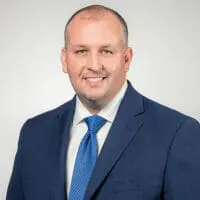Product Liability Update
Getting What You Want From a Jury: Lessons Learned From Top Jury Trial Verdicts
The largest 2013 Arizona verdict of $12.12 million was in a medical malpractice case brought by a patient who claimed that a hospital lab failed to run a correct screening test and, as a result, she developed conditions that led to blindness. Also among the highest Arizona verdicts were two insurance bad faith cases, a wrongful death case in which police failed to prevent a teenager from being shot by her ex-boyfriend, three cases about large loans, a motorcycle injury case and an injury case brought by a train engineer against his railroad employer. However, the “top ten” Arizona verdicts were much lower in 2013 than in previous years.
Significant defense verdicts from 2013 included a road design case in which more than $30 million was claimed, a photo radar shooting, a medical malpractice case from a surgery, a product liability case involving the use of peat moss that led to crop failure, a tractor-trailer crash, a claim of securities fraud for a failed investment, a declaratory judgment action seeking recovery of an insurance payment on an underlying judgment, and an employment discrimination and retaliation claim.
The number of Arizona cases that are tried all the way to verdict has been on a generally declining trend since 2007. About 20-25% fewer verdicts are being rendered than five years ago. New case filings and pending civil case inventory are down in Maricopa County. Cases at higher levels of claimed damages do not seem to be going to trial as frequently. Some believe that plaintiffs are being more selective about the cases that they file and prosecute, perhaps as a consequence of the post-recession world. Another likely factor is more frequent and/or mandatory alternative dispute resolution.
Many of the trial attorneys from the included cases offered their perspective on lessons learned and key takeaways from their trials. Here are a few:
You can’t predict which jurors are on your side. When the jury temporarily deadlocked, the defense attorneys in a commercial case convinced themselves that the jury foreperson was one of the holdouts for their side. After they received the verdict slip, they saw that she had not voted for the defense. Though we as trial attorneys often try to convince ourselves that we know which jurors are on our side, Brian Shulman reiterated, “You just never know how a jury is going to react.”
Demonstrative exhibits can be key. In a wrongful death case against a police force for its alleged failure to protect a woman against violence from her ex-boyfriend, the plaintiffs presented a timeline of events as a demonstrative exhibit. The timeline was color-coded with different colors for the different parties. Trysta Puntenney, one of the trial attorneys, commented that when speaking to the jury afterward, “they told us that was one of the most important things we showed them.”
Professionalism at trial between counsel always helps. Kathy Wieneke, trial counsel in a road design case, praised her opposing counsel for professionalism, kindness and courtesy. Wieneke said, “That is a testament to our profession today. You can do a great job for your clients but still be kind to one another.”
Don’t ignore non-parties at fault. Regarding the largest Arizona verdict from 2013 in a medical malpractice case against a hospital lab, plaintiff’s counsel Greg Osborne said, “We simply resolved that we weren’t going to run away from the fault of the non-party doctors.” He told the jury in openings that plaintiff would do so, elicited that testimony on direct from plaintiff’s experts, and in closing argued that the jury should attribute 80% fault to the non-parties. Osborne believed that position allowed the majority jurors to negotiate with the other jurors to reach the verdict.
Have a strong theme. Richard Dillenburg found that his strategy of a strong theme was one of the keys to his success in the largest insurance bad faith verdict in Arizona in 2013. What carried the day: “Having a story – a true story – that connected with the jury.”
If you want more detail, please read my tenth annual article about Arizona verdicts here. Best wishes for happy lessons learned at trial.















